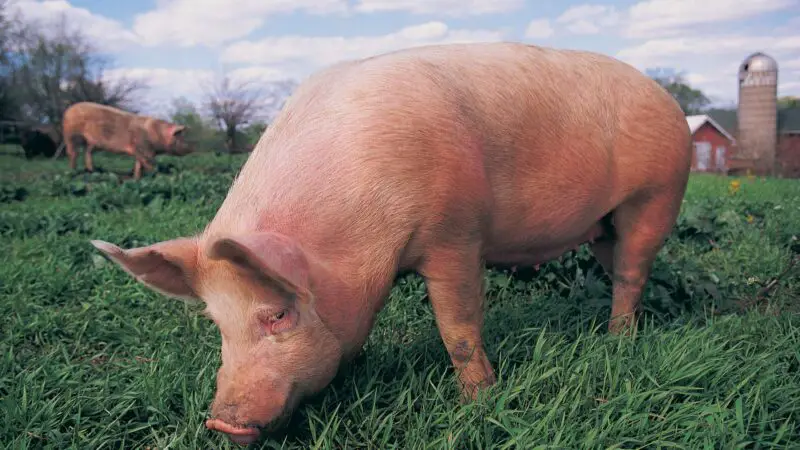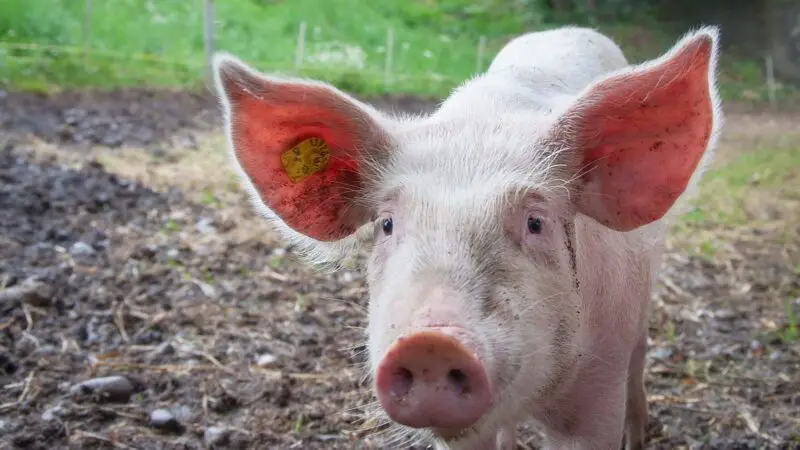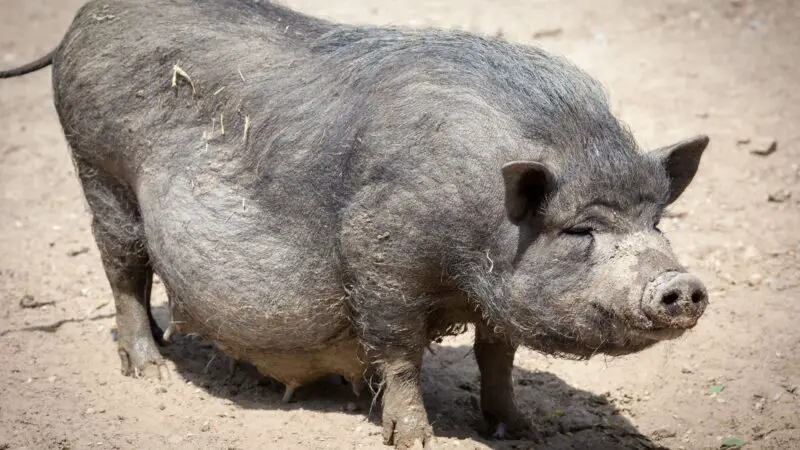Understanding the anatomy and physiology of pigs, particularly in terms of sperm production in boars, is essential for successful pig farming and maintaining the health of your swine. Knowledge of these aspects helps optimize breeding practices and ensures a thriving pig population.
By delving into the world of pig anatomy and physiology, you’ll gain valuable insights into the reproductive processes of these intelligent animals. In this article, we’ll explore the inner workings of pigs, focusing on their reproductive systems and sperm production in boars.

The Anatomy of a Pig
Pigs have a complex anatomical structure, with various organs and systems working together to ensure their survival and reproduction. Understanding the basic anatomy of a pig can help you better comprehend their needs and provide optimal care.
The Digestive System of a Pig
The pig’s digestive system processes a wide range of food sources. Pigs are omnivores, which means they eat both plant and animal matter. Their digestive system includes the mouth, esophagus, stomach, small and large intestines, and other related organs that help break down and absorb nutrients.
Related: Do Pigs Eat Their Own Poop? | Information and Facts
The Reproductive System of a Pig

The reproductive system of a pig is crucial for understanding sperm production in boars. In males, the primary reproductive organs are the testes, which produce sperm, and the penis, which delivers sperm during mating. In females, the reproductive system includes the ovaries, oviducts, uterus, and vagina.
How Do Pigs Reproduce?
Pigs reproduce through sexual reproduction. The male, or boar, mates with the female, or sow, by depositing sperm into her reproductive tract. The sperm then fertilizes the eggs released by the sow’s ovaries, resulting in the formation of embryos that develop into piglets.
How Quickly Do Pigs Reproduce?
Pigs have a relatively short gestation period of around 114 days, or three months, three weeks, and three days. Sows can produce an average of two litters per year, with each litter containing between eight and twelve piglets.
Swine Genetics and Reproduction
Swine genetics play a crucial role in the reproduction and overall performance of pigs. By understanding the genetic traits that influence fertility, growth, and health, farmers can select and breed pigs that exhibit desirable characteristics.
What Makes a Good Boar?
A good boar has a strong libido, robust health, and favorable genetics. These qualities ensure that the boar can successfully mate with multiple sows and pass on desirable traits to their offspring.

What Makes a Good Sow?
A good sow has a strong reproductive history, good maternal instincts, and excellent overall health. These factors contribute to successful pregnancies, healthy litters, and a thriving pig population.
When Should You Artificially Inseminate a Pig?
Artificial insemination (AI) is commonly used in pig farming to improve breeding efficiency and genetic diversity. AI should be performed when the sow is in estrus or “heat,” which typically occurs every 18-24 days and lasts for two to three days.
How Does Artificial Insemination Work in a Pig?
During artificial insemination, sperm from a selected boar is collected and then introduced into the sow’s reproductive tract using specialized equipment. This procedure allows farmers to control the breeding process and ensure that the best genetic traits are passed on to future generations.
Related Questions

Can Pigs Get Pregnant Without a Male?
No, pigs cannot get pregnant without a male. Fertilization requires sperm from a boar to unite with an egg from a sow.
Why Are Pigs Commonly Used to Study Human Anatomy and Physiology?
Pigs are often used in the study of human anatomy and physiology because they share many anatomical and physiological similarities with humans. Their organs are similar in size, structure, and function, making pigs an excellent model for research and medical advancements.
Do Pigs Have a Blood Type?
Yes, pigs do have blood types. However, their blood group system is different from that of humans. Understanding these differences is important for medical research and in cases where pig organs are used for transplants.
Final Thoughts
Understanding the anatomy and physiology of pigs, particularly sperm production in boars, is vital for successful pig farming and breeding. By familiarizing yourself with these fascinating aspects of pig biology, you can optimize your breeding practices and ensure the health and well-being of your swine. Knowledge is power when it comes to managing a thriving and productive pig population.
